Sean Bienvenidos Japonistasarqueologicos A Una Nueva Entrega Arqueológica Recién Salida Del Horno,



Sean bienvenidos japonistasarqueologicos a una nueva entrega arqueológica recién salida del horno, se ha descubierto en la prefectura de Nara espejo de bronce en forma de escudo hallado en el túmulo funerario de Tomio Maruyama, dicho esto pónganse cómodos desde que comenzamos. - Características : Mide 64 cm de largo y 31 cm de ancho. Data de finales del siglo IV y tiene 109 m de diámetro. En un examen que se realizó mediante rayos X fluorescentes al espejo con forma de escudo y estaba compuesto de cobre detectó la presencia de estaño, cobre y plomo. La superficie del espejo tenía rastros de que había sido pulido de forma suave. Los patrones geométricos, como es el patrón 'dragón', es una representación simplificada de una bestia divina china posiblemente tuvieran influencia china y los patrones de, los dientes de sierra, que se asemejan a hojas de sierra, se le aplican en la parte posterior. - En el mismo yacimiento se han encontrado: -85 espadas serpentinas en Japón y 4 en Corea del Sur. -La espada serpentina tiene una longitud total de 237, es tres veces más grande que el túmulo funerario de Uda Kitahara que es de 84,6 centímetros localizados en la ciudad de Uda, prefectura de Nara.
Kosaku Okabayashi, subdirector del Instituto Arqueológico de Kashihara, dijo en una conferencia de prensa: "El espejo de cobre en forma de escudo muestra el pensamiento flexible y la creatividad de la gente de la época, así como el alto poder de diseño. Prueba que el nivel técnico de producción fue más alto de lo que había imaginado". - El Túmulo funerario de Tomio Maruyama fue construido en la segunda mitad del siglo IV, dicho túmulo funerario tiene forma circular y es el más grande de Japón. La medición tridimensional con un láser reveló una estructura de tres etapas con un diámetro de 109 metros. La parte principal de la parte superior del montículo fue robada durante el período Meiji, y la piedra kuwagata, que se cree que fue desenterrada en ese momento, ha sido designada como una importante propiedad cultural nacional. - Espero que os guste y pasen una buena semana y nos vemos en próximas publicaciones de Japón.
-
日本の考古学者の皆さん、焼きたての新しい考古学的情報へようこそ。丸山富雄の古墳で見つかった盾の形をした青銅鏡が奈良県で発見されました。 - 特徴: サイズは長さ64cm、幅31cmです。 4 世紀末に造られた直径 109 m です。 銅製の盾型ミラーを蛍光X線で検査したところ、錫、銅、鉛の存在が検出されました。 鏡の表面には軽く磨いた跡があった。 「龍」文様などの幾何学模様は中国の影響を受けたと思われる中国の神獣を簡略化して表現したもので、背中にはノコギリの刃のような鋸歯文様が施されています。 - 同じサイトで次のものが見つかりました。 -蛇紋刀は日本に85本、韓国に4本。 蛇剣の全長は237で、奈良県宇陀市にある宇陀北原古墳の84.6センチメートルの3倍以上の大きさです。 橿原考古学研究所の岡林耕作副所長は記者会見で「盾形の銅鏡は、当時の人々の柔軟な思考と創造性、高いデザイン力を示している」と述べた。制作の技術レベルは想像以上でした。」 - 富雄丸山古墳は4世紀後半に築造された日本最大の円墳です。レーザーによる三次元計測により、直径109メートルの3段構造が判明した。明治時代に墳丘上部の主要部が盗まれ、その際に出土したとされる鍬形石は国の重要文化財に指定されている。 - 気に入っていただけて、良い一週間をお過ごしいただければ幸いです。今後の日本からの投稿でお会いしましょう。
-
Welcome, japanesearchaeologists, to a new archaeological delivery fresh from the oven, a bronze mirror in the shape of a shield found in the burial mound of Tomio Maruyama has been discovered in the Nara prefecture. That said, make yourself comfortable as we begin.
-
Characteristics : It measures 64 cm long and 31 cm wide. It dates from the end of the 4th century and is 109 m in diameter. In an examination that was carried out using fluorescent X-rays on the shield-shaped mirror and was composed of copper, the presence of tin, copper and lead was detected. The surface of the mirror had traces of being lightly polished. The geometric patterns, such as the 'dragon' pattern, is a simplified representation of a Chinese divine beast possibly having Chinese influence and the sawtooth patterns, which resemble saw blades, are applied to the back. . - In the same site they have been found:
-
85 serpentine swords in Japan and 4 in South Korea. -The serpentine sword has a total length of 237, it is three times larger than the burial mound of Uda Kitahara which is 84.6 centimeters located in the city of Uda, Nara prefecture. Kosaku Okabayashi, deputy director of the Kashihara Archaeological Institute, said at a press conference: "The shield-shaped copper mirror shows the flexible thinking and creativity of the people of the time, as well as the high design power. It proves that "The technical level of production was higher than I had imagined."
-
The Tomio Maruyama Burial Mound was built in the second half of the 4th century. This burial mound is circular in shape and is the largest in Japan. Three-dimensional measurement with a laser revealed a three-stage structure with a diameter of 109 meters. The main part of the upper part of the mound was stolen during the Meiji period, and the kuwagata stone, believed to have been unearthed at that time, has been designated as an important national cultural property.
-
I hope you like it and have a good week and see you in future posts from Japan.
More Posts from Noticiasarquelogicasjaponesas and Others
Sean bienvenidos japonitasarqueologicos, a un nuevo especial ya somos 2400 seguidores mil gracias por el apoyo y para agradeceros os traigo una de las leyendas más icónicas de Japón dicho esto pónganse cómodos que empezamos. - ¿Qué significa Sakura? Significa Cerezo en flor, seguramente os suene el nombre por algún que otro personaje de anime como: Sakura cazadora de cartas o en la película llamada comerme tu páncreas. - ¿Cómo surgió está leyenda? Todo comienza, en un Japón que está desolado por las guerras y horrores de los seres humanos, nuestro personaje se localiza en un bosque donde hay un árbol al cual no le florecían las flores, los animales ni la hierba por el mal que emanaba de él. - Un día un hada se compadeció de él y le concedió el poder de transformarse en hombre durante 20 años para poder encontrar el amor pero no fue así lo único que vio fue horror. Cuando le quedaba poco tiempo seguía sin florecer en lo que respecta como árbol y como humano. Un día en la orilla del río se deslumbró al ver a Sakura y se enamoró de ella. Llegó el día en el que se transformó en árbol y Sakura abrazó el árbol, le confesó su amor el hada tenía dos opciones adherirse al Yohiro o no pero viendo los horrores del mundo decide fusionarse con él. - Esta leyenda está ligada a una de las festividades más importantes de Japón que se llama Hanami durante una semana los japoneses contemplan la flor de Sakura en todo su esplendor. Esto fue un símbolo para los Kamikazes durante la 2ww y para los samuráis que lo consideraban con la sangre. - Espero que os haya gustado el especial y nos vemos en próximas publicaciones de Arqueología japonesa. Un cordial saludo. - 日本考古学へようこそ。フォロワー数が 2,400 人になりました。ご支援いただき、ありがとうございます。そうは言っても、安心して始めましょう。 - さくら とはどういう意味ですか?桜という意味です。カードハンターさくらや映画「君の膵臓をたべます」などのアニメのキャラクターでこの名前をよくご存じでしょう。 - この伝説はどのようにして生まれたのでしょうか?すべては、戦争と人間の恐怖によって荒廃した日本で、私たちのキャラクターは、そこから発せられる悪のために花、動物、草が咲かなかった木がある森にいます。 - ある日、彼を憐れんだ妖精が、愛を見つけるために20年間人間に変身する力を与えてくれましたが、そうではなく、彼が見たのは恐怖だけでした。 彼に残された時間がほとんどないとき、彼はまだ木としても人間としても成長していませんでした。ある日、彼は川岸で桜を見て幻惑し、恋に落ちました。彼が木に変身する日が来て、サクラは木に抱きつき、愛を告白しました。妖精には2つの選択肢がありました。ヨヒロに従うかどうか。しかし、世界の恐ろしさを見て、彼女は彼と融合することを決めました。 - この伝説は、花見と呼ばれる日本で最も重要なお祭りの 1 つと結びついており、日本人は 1 週間にわたってその素晴らしさを満喫する桜の花を鑑賞します。これは、第二次世界大戦中の特攻隊と、それを血をもって考えた武士たちの象徴でした。 - この特集を気に入っていただければ幸いです。今後の日本考古学の出版物でお会いしましょう。心のこもった挨拶。 - Welcome japonitasarqueologicos, to a new special we are already 2400 followers thank you very much for the support and to thank you I bring you one of the most iconic legends of Japan that said make yourselves comfortable we begin. - What does Sakura mean? It means Cherry Blossom, surely you know the name from some other anime character like: Sakura card hunter or in the movie called eat your pancreas. - How did this legend come about? It all begins, in a Japan that is devastated by wars and horrors of human beings, our character is located in a forest where there is a tree that did not bloom flowers, animals or grass because of the evil that emanated from it. - One day a fairy took pity on him and granted him the power to transform into a man for 20 years to be able to find love but it was not like that the only thing he saw was horror. When he had little time left, he still did not blossom as a tree or as a human. One day on the river bank he was dazzled by the sight of Sakura and fell in love with her. The day came when he transformed into a tree and Sakura hugged the tree, confessed her love to him, the fairy had two options to join Yohiro or not, but seeing the horrors of the world she decided to merge with him. - This legend is linked to one of the most important festivals in Japan called Hanami, during which the Japanese contemplate the Sakura flower in all its splendor for a week. This was a symbol for the Kamikazes during WWII and for the samurai who considered it to be blood. - I hope you liked the special and see you in future publications of Japanese Archaeology. Best regards.


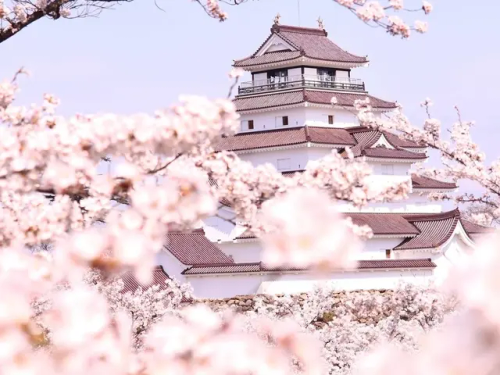





Sean bienvenidos japonistasarqueológicos, una nueva entrega en esta ocasión hablaremos del Tanabata una vez dicho esto pónganse cómodos que empezamos. - ¿Qué es el tanabata?¿Cuándo se celebra?¿Cuál es su origen?El tanabata, surge en China en la dinastía Han que posteriormente llegará a Japón durante el período Nara (710 d.C.- 794 d.C.) a través de la nobleza ,pero no fue hasta el período Edo (1600-1868) que se hizo popular. Esto lo podemos ver en el anime como es el caso de Doraemon (ドラえもん), pero hay montones de animes que tratan esta temática una película que trata estos temas podrían ser: Amor de Gata, Kimi no Nawa, Kimetsu no Yaiba podría hacer una lista que nunca acabaria de la cantidad de anime que hay que trata el Tanabata. ¿Qué es el tanabata? Cuenta la leyenda de Orihime y Hikoboshi que solo se pueden ver la séptima luna del séptimo mes, se crea un puente que les permite cruzar y estar juntos ¿Cuándo se celebra? Se celebra el 7 de julio y lo más característico de esta festividad son los fuegos artificiales y en Tokyo por ejemplo: el templo Zojoji, pero cualquier templo lo podréis apreciar muy bien. tanzaku ¿En qué consiste? Se coloca un trozo de papel con tu deseo y se colocan en árboles de bambú. Para terminar me gustaría mencionar que hay una constelación que representa esta maravillosa historia. - Espero que os haya gustado y nos vemos en próximas publicaciones que pasen una buena semana. - ようこそ、日本の考古学者たちへ。今回は七夕についてお話します。 - 七夕とは何か、いつ祝うのか、その起源は? 七夕は中国の漢の時代に始まり、奈良時代に貴族を通じて日本に伝わった。 ドラえもんなどのアニメに見られるが、このテーマを扱ったアニメはたくさんある:七夕を扱ったアニメは枚挙にいとまがない。織姫と彦星は七夕の日にしか会えないという伝説がある。 いつ祝うの?月7日に行われます。このお祭りの最大の特徴は花火で、東京では増上寺が有名ですが、どこのお寺でもよく鑑賞できます。 短冊 短冊とはどんなものですか?願い事を書いた紙を竹に貼る。最後に、この素晴らしい物語を象徴する星座があることをお伝えしたい。 - それでは、また次の記事でお会いしましょう。
Welcome to the Japanese archaeologists, this time we are going to talk about Tanabata, so make yourselves comfortable and let's get started. - What is tanabata, when is it celebrated, what is its origin? Tanabata, which originated in China in the Han dynasty, later came to Japan during the Nara period (710 AD - 794 AD) through the nobility, but it was not until the Edo period (1600-1868) that it became popular. This can be seen in anime such as Doraemon (ドラえもん), but there are lots of anime that deal with this theme, a movie that deals with these themes could be: Love of Cat, Kimi no Nawa, Kimetsu no Yaiba I could make a list that would never end of the amount of anime out there that deals with Tanabata. what is tanabata? Legend has it that Orihime and Hikoboshi can only see each other on the seventh moon of the seventh month, a bridge is created that allows them to cross and be together. When is it celebrated? It is celebrated on the 7th of July and the most characteristic of this festivity are the fireworks and in Tokyo for example: the Zojoji temple, but you can appreciate it very well in any temple. tanzaku What does it consist of? You put a piece of paper with your wish on it and place it on bamboo trees. Finally, I would like to mention that there is a constellation that represents this wonderful story. - I hope you liked it and see you in the next posts have a nice week.

CAPÍTULO 1 INTRODUCTORIO: Sean bienvenidos japonistaarqueológicos, a una nueva entrega de la serie arqueológica de la ciudad de Matsumoto en la prefectura de Nagano, las ruinas que nos acompañarán a lo largo de estos tres capítulos son las ruinas de Weda¿Qué son estas ruinas? ¿De qué periodo tratan? ¿Dónde se localizan exactamente? Todas estas preguntas y más nos van a ir acompañando a lo largo de estas publicaciones pónganse cómodos que empezamos. - las ruinas las podemos localizar en el emplazamiento suroeste de la ciudad de Matsumoto en un abrigo aluvial ¿Qué dos ríos son lo que podemos localizar? ¿Cuáles son sus nombres? Los ríos se llaman Azusa y Kusari, la arqueología ha demostrado que no hubo asentamientos que continuarán desde los periodos Yayoi tardío y el periodo Kofun¿Cuándo empezaron a plantar arroz? Se estima que sería a finales del siglo VII d.c. - ¿Qué opinan ustedes al respecto? ¿Conocían el emplazamiento? Espero que os haya gustado, nos vemos en próximas publicaciones. 導入第 1 章: 長野県松本市の考古学シリーズの新作、ジャポニスタ考古学へようこそ、この3つの章でお供する遺跡は、ウェダ遺跡です.この遺跡は何ですか?彼らはどの時代についてですか?それらは正確にはどこにありますか?これらすべての質問とその他の質問は、これらの出版物全体で私たちに付随します。快適にして、始めましょう. - 松本市の南西部に位置する沖積シェルター内にある遺跡を見つけることができます.2つの川を見つけることができますか?それらの名称は何ですか?梓川と鎖川と呼ばれる川ですが、考古学的には弥生時代後期から古墳時代にかけて集落が続いていなかったことが考古学的にわかっていますが、田植えはいつ頃から始まったのでしょうか。 7世紀末頃と推定されています。 - あなたはそれについてどう思いますか?彼らは場所を知っていましたか?気に入っていただければ幸いです。今後の出版物でお会いしましょう。 - INTRODUCTORY CHAPTER 1: Welcome to japonistaarchaeological, to a new installment of the archaeological series of the city of Matsumoto in Nagano prefecture, the ruins that will accompany us throughout these three chapters are the Weda ruins. What are these ruins? What period are they about? Where exactly are they located? All these questions and more will accompany us throughout these publications, make yourself comfortable, let's start. - We can locate the ruins in the southwestern location of the city of Matsumoto in an alluvial shelter. What two rivers can we locate? What are their names? The rivers are called Azusa and Kusari, archeology has shown that there were no settlements to continue from the late Yayoi periods and Kofun period, when did they start planting rice? It is estimated that it would be at the end of the 7th century AD. - What do you think about it? Did they know the location? I hope you liked it, see you in future publications. ソース写真/source photo:https://naganomaibun.or.jp/research/east/和田遺跡・和田1号塚/


権力者の冠をデザイン? 天皇陵出土説もある謎の石枕の正体に迫る.
Designing the crown of a powerful person? Uncovering the true nature of the mysterious stone pillow that is said to have been excavated from the Emperor's tomb.






Sean bienvenidos japonistasarqueologicos, a una nueva entrega de arqueología nipona, en esta ocasión os enseñaré algunos objetos recuperados del yacimiento del toro, entre otros — Los bienes muebles: son todos aquellos materiales que están hechos de madera y hueso que rara vez se conservan, a no ser que se den las condiciones óptimas como es en este caso. Pondré en un orden sucesivo las fotos de los objetos de antes de ser restaurados y una vez ya restaurados, para esta labor se ha tardado 14 años desde 2018-2021.
— Espero que os haya gustado y nos vemos en próximas publicaciones, que pasen una buena semana. - ようこそ、ジャポニスタサルケオロジコスの日本考古学の新しい回へ、この機会に私はあなたに、とりわけ、雄牛のサイトから回収されたいくつかのオブジェクトを表示します。 - 可動遺物:木や骨で作られたもので、今回のように最適な条件でない限り、保存されることはほとんどない。2018年から2021年までの14年間を費やしたこの作業のために、修復される前と、すでに修復されたものの写真を順を追って並べます。
- お気に召していただけたなら幸いである。 - Welcome japonistasarqueologicos, to a new installment of Japanese archaeology, on this occasion I will show you some objects recovered from the site of the bull, among others - Movable goods: these are all those materials made of wood and bone that are rarely preserved, unless the conditions are optimal as in this case. I will put in a successive order the photos of the objects before being restored and once already restored, for this work it has taken 14 years from 2018-2021.
- I hope you liked it and see you in future publications, have a good week.
More information: https://www.shizuoka-toromuseum.jp/zhcn/







Sean bienvenidos japonistasarqueológicos a una nueva entrega sintética de arqueología japonesa, en la cual hablaremos de el Túmulo funerario Kengushizuka, una vez dicho esto pónganse cómodos que empezamos. - El Túmulo funerario Kengushizuka, se localiza en Koe, pueblo de Asuka, distrito de Takaichi la prefectura de Nara, se construyó en el periodo Asuka lo que sería a finales del siglo VII. En el Nihon Shoki son las Crónicas de Japón en el que se afirma que en el 667d.c en el reinado de la emperatriz Saimei. - Espero que os haya gustado os deseo una buena semana y nos vemos en próximas publicaciones del país del sol naciente. - 日本の考古学者を迎えての新しい総合回です。今回は「牽牛子塚古墳」についてお話しします。どうぞごゆっくりとお過ごしください。 - 奈良県高市郡明日香村小江にある牽牛子塚古墳は、飛鳥時代、7世紀後半に築かれた古墳です。 日本書紀』には、西暦667年、斉明天皇の時代と記されている。 - 楽しんでいただけたなら幸いです。良い一週間をお過ごしいただき、日出ずる国から今後の出版物でお会いできることを祈ります。 - Welcome Japanese archaeologists to a new synthetic installment of Japanese archaeology, in which we will talk about the Kengushizuka burial mound, so make yourselves comfortable and let's get started. - The Kengushizuka burial mound, located in Koe, Asuka village, Takaichi district, Nara prefecture, was built in the Asuka period in the late 7th century. In the Nihon Shoki are the Chronicles of Japan in which it is stated that in 667 AD in the reign of Empress Saimei. - I hope you enjoyed it, I wish you a good week and see you in future publications from the land of the rising sun.

日本の考古学と科学思想の歴史。 第3章 : 日本の考古学者の皆さん、哲学的観点から見た新しい日本考古学へようこそ。 - 1868年当時、日本にはヨーロッパやアメリカで見られるような科学的根拠はありませんでした。日本がその精神やその一部を開放したのは、1868年から1869年の戊辰戦争後になります。米国のような国は日本の科学をモデルにするだろうから、非常に保守的だった。 日本で骨董品への関心が芽生えたのはいつ頃ですか? 江戸時代にはすでに骨董品への関心があったことが知られており、はるか昔にヨーロッパでも同様のことが起こりました。 日本の発掘の始まりは19世紀のほぼ終わりに始まり、数年前に日本でいくつかのローマ硬貨が発見されました。どうやら日本の封建領主は古遺物を収集するのが好きでした。おそらくそれらは中国のどこかの港から海岸に到着しました。日本語。 - 過去を知りたいという欲求は、どの大陸に属していても、すべての人類に共通のものであり、問題の時代についても同じことが言えます。 ヨーロッパやアメリカの様々な勢力が日本に到来したとき、彼らはその住民に影響を与えました。そのため、日本人によって日本考古学の父と考えられているエドワード・モースを、他の登場人物の中でも特に取り上げています。 19 世紀には、アメリカ哲学の最も偉大な学派の 1 つであるテイラー主義があり、これは台湾で考古学的発掘を行い、中国および韓国との関係を確立する日本の考古学の最も偉大な人物の 1 人である鳥居龍蔵に影響を与えることになります。 - 気に入っていただければ幸いです。今後の投稿でお会いしましょう。良い一週間をお過ごしください。 - HISTORY OF JAPANESE ARCHEOLOGY AND SCIENTIFIC THOUGHT. Chapter 3 : Welcome, Japanesearchaeologicalists, to a new installment of Japanese archaeology, seen from a philosophical point of view. Having said that, get comfortable and let's begin. - In 1868 Japan did not have a scientific base per se as we can see in Europe or the United States, it will be after the Boshin War of 1868-69 when Japan opened its mentality or part of it, since a good part of the population was very conservative because Countries like the United States would model Japanese sciences. When did interest in antiques arise in Japan? It is known that in the Edo period there was already interest in antiquities, something similar happened in Europe a long time ago. The beginning of the Japanese excavations began almost at the end of the 19th century, a few years ago some Roman coins were discovered in Japan, apparently a feudal lord in Japan liked to collect antiquities, they probably arrived from some port in China to the coasts Japanese. - The desire to know the past is something that all human beings share, no matter what continent you belong to and the same can be said about the era in question. When the different powers from Europe and the United States arrived in Japan, they influenced its inhabitants, thus we have, among other characters, Edward Morse, considered by the Japanese, the father of Japanese archaeology. During the 19th century we have one of the greatest schools of American philosophy, Taylorism, which will influence one of the greatest figures of Japanese archeology Torii Ryūzō who will carry out archaeological excavations in Taiwan, establishing relations with China and Korea. - I hope you liked it and see you in future posts, have a good week.
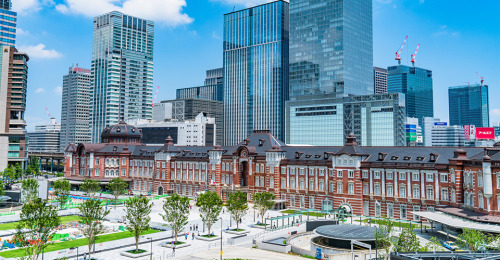

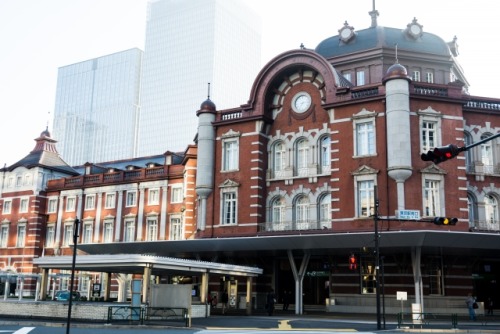
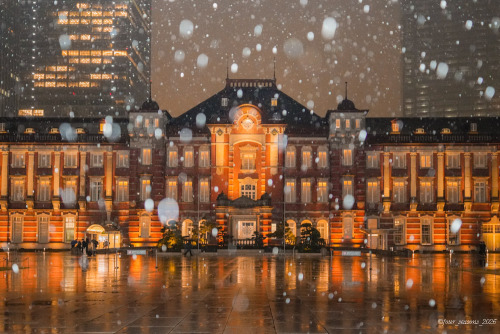
Sean bienvenidos japonistasarqueológicos, a una nueva entrega en la cual hablaremos de la famosa estación de Tokyo, uno de los pocos edificios que ha sobrevivido al paso del tiempo, ya que tras la operación doolittle y el gran terremoto de Tokio de 1923, Tokio ha sido muy remodelada, dicho esto pónganse cómodos que empezamos. - En 1908, comenzó su construcción en lo que respecta a la estación central, en 1914 empezó a funcionar, en la era Taisho 1915 Se inauguró el hotel de la estación de Tokio. En el año 1923 tiene lugar el Gran Terremoto de Kanto y el edificio de la estación no está particularmente dañado, se pudo reparar, pero la ciudad de Tokyo fue remodelada por completo y en 2007 realizaron trabajos de restauración, terminado en 2012. Hay que recordar que ha sufrido muchas restauraciones, ya que la de 1945 fue la más letal de todas. - Espero que os haya gustado y nos vemos en próximas publicaciones ¿Conocían este edificio y su historia? Que pasen una buena semana. - 今回は、有名な東京駅についてお話します。ドゥーリトル作戦や1923年の東京大震災の後、東京は大きく改造されましたが、その中でも数少ない時代の流れに耐えた建物の一つです。 - 1908年、中央駅の建設が始まり、1914年に開業、大正時代の1915年には東京ステーションホテルがオープンしました。1923年に関東大震災が起こり、駅舎は特に被害はなく、修復されましたが、東京の街は完全に改造され、2007年に修復工事が行われ、2012年に完成しました。1945年の震災が最も致命的であったため、何度も修復が行われたことを忘れてはならない。 - この建物とその歴史を知っていましたか?それでは、今週もよろしくお願いします。 - Welcome to a new installment in which we will talk about the famous Tokyo Station, one of the few buildings that has survived the passage of time, since after operation doolittle and the great Tokyo earthquake of 1923, Tokyo has been greatly remodelled, that said, make yourselves comfortable and let's get started. - In 1908, construction began on the Central Station, which became operational in 1914, and in the Taisho era 1915, the Tokyo Station Hotel was opened. In 1923 the Great Kanto Earthquake took place and the station building was not particularly damaged, it was repaired, but the city of Tokyo was completely remodelled and in 2007 restoration work was carried out, completed in 2012. It should be remembered that it has undergone many restorations, as the one in 1945 was the most lethal of them all. - I hope you liked it and see you in future posts. Did you know this building and its history? Have a nice week.


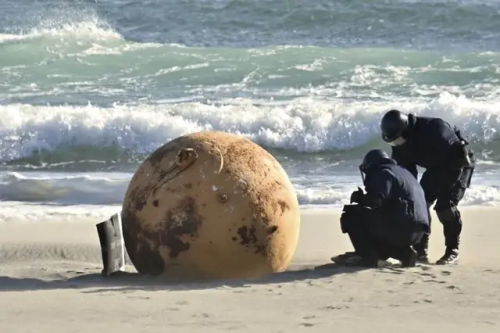
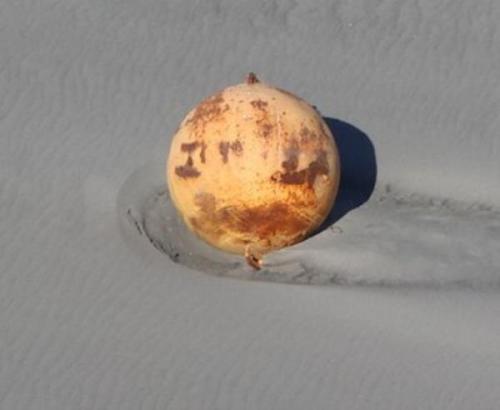
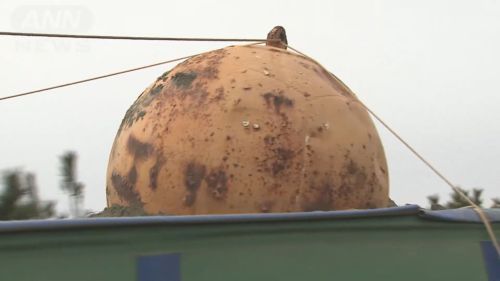
Sean bienvenidos japonítasarqueológicos, a una nueva novedad japonesa, que está dando la vuelta al mundo una vez dicho esto póngase cómodos que empezamos. - Del día 21 al 23 de febrero, en la playa de Enshu el distrito de Nishi, en la ciudad de Hamamatsu en la prefectura de Shizuoka. - La bola de hierro mide 1’5 metros de diámetro, el Interior es hueco por lo que no hay riesgo de explotar. - Espero que os haya gustado¿Qué opinan ustedes? Abro el debate, nos vemos en próximas publicaciones de Japón. - ようこそ 日本の考古学者の皆さん 世界に羽ばたく日本の新機軸をご覧ください と言うわけで 楽にしてください 始めましょう - 2月21日から23日まで、静岡県浜松市西区にある遠州灘海岸にて。 - 鉄球は直径1.5メートル、内部は空洞で爆発の心配はない。 - いかがでしたか、いかがでしたか。また、日本からの投稿でお会いしましょう。 - Welcome, Japanese archaeologists, to a new Japanese novelty, which is making its way around the world, and with that said, make yourselves comfortable and let's get started. - From the 21st to the 23rd of February, at Enshu Beach, Nishi District, Hamamatsu City, Shizuoka Prefecture. - The iron ball is 1.5 metres in diameter, the interior is hollow so there is no risk of exploding. - I hope you liked it. What do you think? I open the debate, see you in future posts from Japan.
-
 junian5522 liked this · 2 months ago
junian5522 liked this · 2 months ago -
 devorarefatum liked this · 4 months ago
devorarefatum liked this · 4 months ago -
 panicinthestudio reblogged this · 4 months ago
panicinthestudio reblogged this · 4 months ago -
 dincolos-blog11 liked this · 9 months ago
dincolos-blog11 liked this · 9 months ago -
 rfpreiwaphase liked this · 11 months ago
rfpreiwaphase liked this · 11 months ago -
 repera23 liked this · 1 year ago
repera23 liked this · 1 year ago -
 algaecoveredstone liked this · 1 year ago
algaecoveredstone liked this · 1 year ago -
 okiemen liked this · 1 year ago
okiemen liked this · 1 year ago -
 adam-trademark liked this · 1 year ago
adam-trademark liked this · 1 year ago -
 noticiasarquelogicasjaponesas reblogged this · 1 year ago
noticiasarquelogicasjaponesas reblogged this · 1 year ago -
 mymischa liked this · 1 year ago
mymischa liked this · 1 year ago -
 shkayy liked this · 1 year ago
shkayy liked this · 1 year ago -
 shadowsong26x reblogged this · 1 year ago
shadowsong26x reblogged this · 1 year ago -
 bear-pattern-hamster liked this · 1 year ago
bear-pattern-hamster liked this · 1 year ago -
 biomaterial liked this · 1 year ago
biomaterial liked this · 1 year ago -
 theythinkimalive liked this · 1 year ago
theythinkimalive liked this · 1 year ago -
 nyonyia liked this · 1 year ago
nyonyia liked this · 1 year ago -
 spletski reblogged this · 1 year ago
spletski reblogged this · 1 year ago -
 spletski liked this · 1 year ago
spletski liked this · 1 year ago -
 forgetimabluedreamer liked this · 1 year ago
forgetimabluedreamer liked this · 1 year ago -
 coolancientstuff reblogged this · 1 year ago
coolancientstuff reblogged this · 1 year ago -
 odyssey420 liked this · 1 year ago
odyssey420 liked this · 1 year ago -
 hiromusicarts-blog liked this · 1 year ago
hiromusicarts-blog liked this · 1 year ago -
 lavendulafaerie liked this · 1 year ago
lavendulafaerie liked this · 1 year ago -
 dgm56 liked this · 1 year ago
dgm56 liked this · 1 year ago -
 mobymartin liked this · 1 year ago
mobymartin liked this · 1 year ago -
 rideroftherange liked this · 1 year ago
rideroftherange liked this · 1 year ago -
 babylon-iraq-baghdad liked this · 1 year ago
babylon-iraq-baghdad liked this · 1 year ago -
 nekogamenya liked this · 1 year ago
nekogamenya liked this · 1 year ago -
 ihsanperfectlysparklywolf liked this · 1 year ago
ihsanperfectlysparklywolf liked this · 1 year ago -
 rodolfo9999 liked this · 1 year ago
rodolfo9999 liked this · 1 year ago -
 honeybadgersfandom liked this · 1 year ago
honeybadgersfandom liked this · 1 year ago -
 hroethgar liked this · 1 year ago
hroethgar liked this · 1 year ago -
 tytoowl liked this · 1 year ago
tytoowl liked this · 1 year ago -
 mayam1127 liked this · 1 year ago
mayam1127 liked this · 1 year ago -
 rorydbe liked this · 1 year ago
rorydbe liked this · 1 year ago -
 hcr-den liked this · 1 year ago
hcr-den liked this · 1 year ago -
 asiaphotostudio liked this · 1 year ago
asiaphotostudio liked this · 1 year ago -
 dgfmaurizio liked this · 1 year ago
dgfmaurizio liked this · 1 year ago -
 glumpshitto97 liked this · 1 year ago
glumpshitto97 liked this · 1 year ago -
 misterio-m liked this · 1 year ago
misterio-m liked this · 1 year ago -
 sicks93 liked this · 1 year ago
sicks93 liked this · 1 year ago

238 posts









